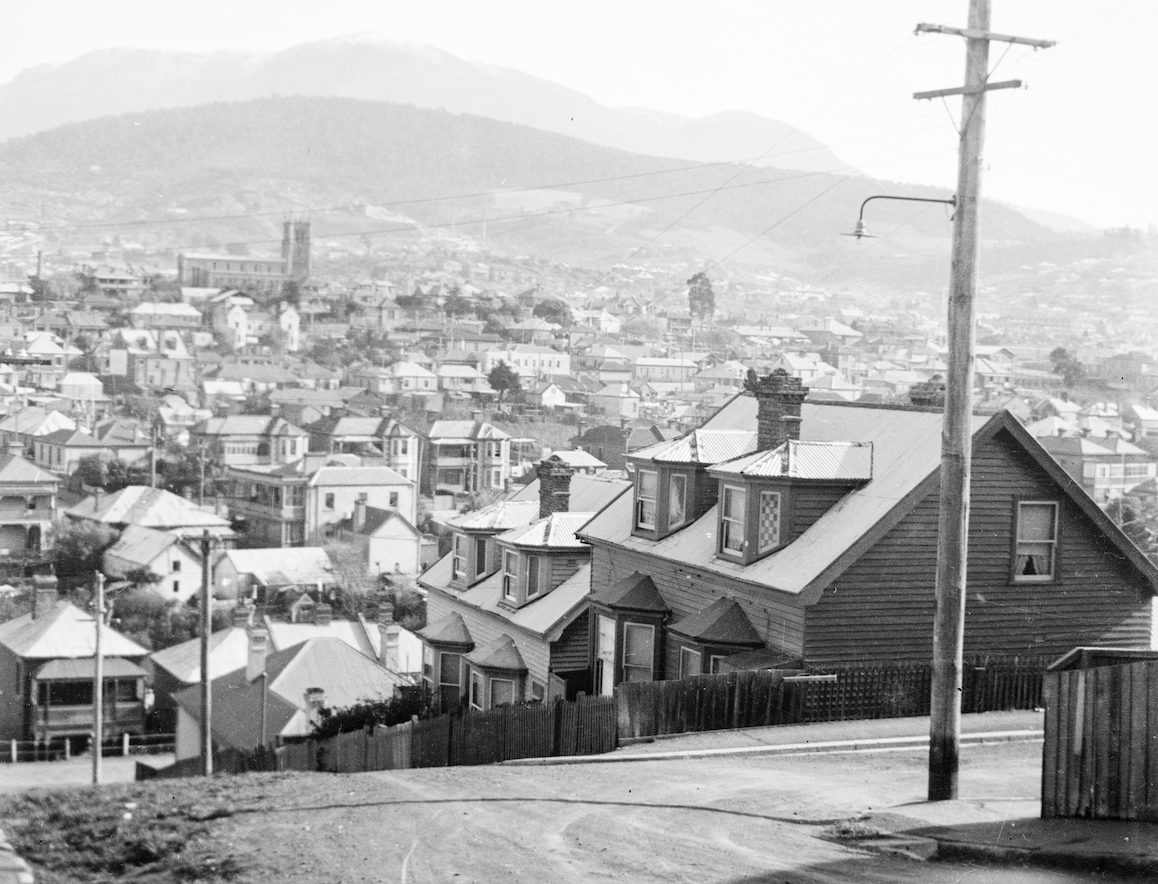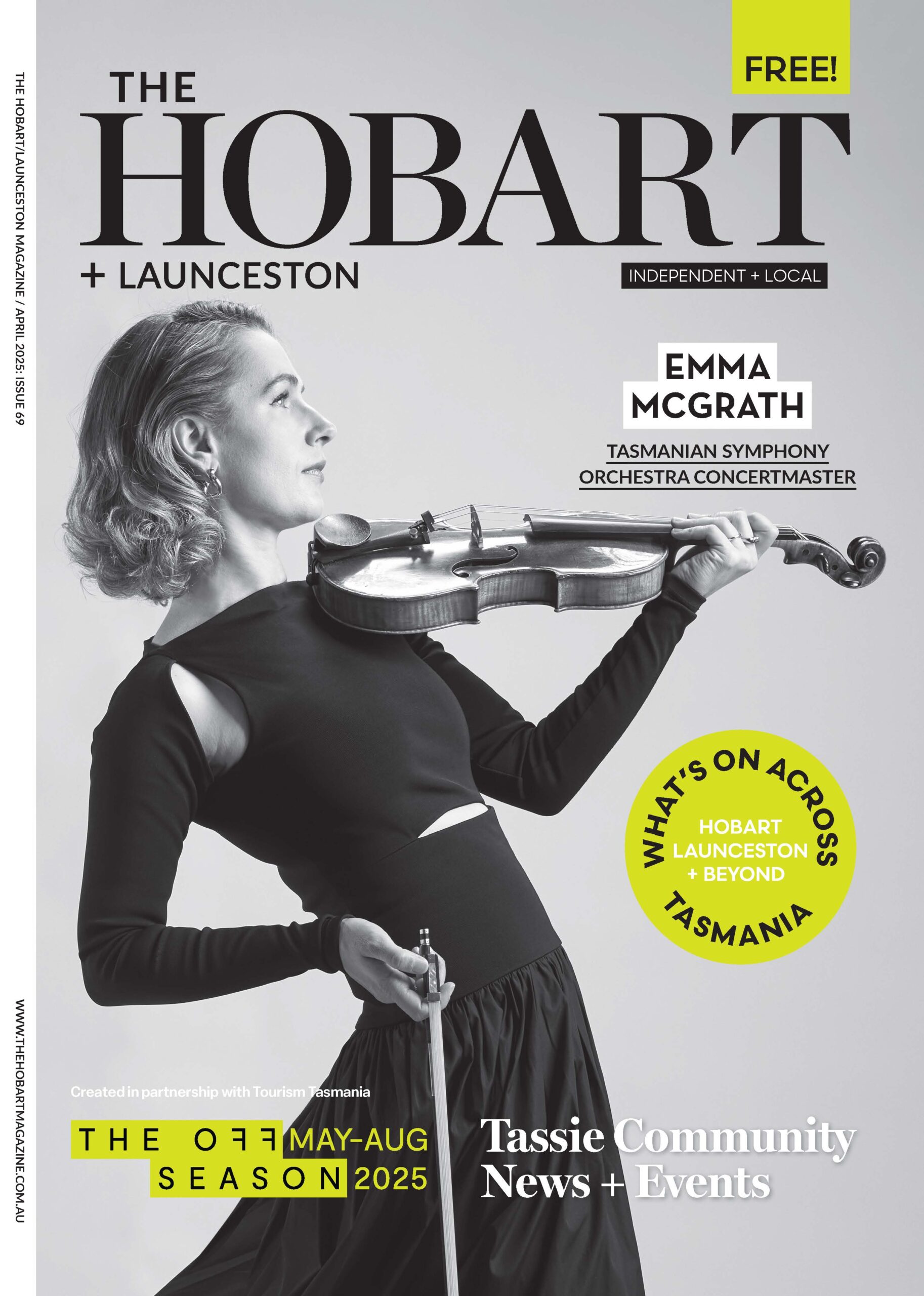The History Of The Glebe
by Dr Dianne Snowden AM

Originally known as Glebe Town, Glebe is a small historic suburb of Hobart sitting below the Queen’s Domain and adjacent to the City of Hobart. It is characterised by heritage homes dating from the 1880s.
Many of its buildings are listed on the Tasmanian Heritage Register and the Glebe is recognised for its high number of well-preserved weatherboard buildings, several of them terrace houses. Many Glebe houses had names and some house name plaques can still be seen.
The Glebe also has several significant educational buildings: Domain House, on the Glebe, was erected in 1848-49 as the Hobart High School and was later the original site of the University of Tasmania. The Philip Smith Centre opened in 1911 as a teacher training centre. The Presbyterian Church established Officer College and the Glebe Ladies College in 1888.
The Glebe gets its name from the three Glebes (church land) granted to the Presbyterian Church, Church of England (Anglican), and Catholic Church in the early 1880s. The Church of England grant was known as Trinity Glebe. The glebe land was divided into building allotments and leased for 99 years. In August 1884, the Tasmanian News reported: “The three glebes have been cut up into building allotments, and a considerable portion of them has been leased. Several acres of the hillside south of the Domain, have been covered by buildings, and many more houses are in course of erection.”
The Glebe has been a suburb of Hobart since 1907. Before that, from 1885, it was governed by the five-member Glebe Town Town Board.
Before the four lanes of Brooker Avenue were constructed, Park Street was a quiet street separating the Glebe from Hobart. The face of the Glebe changed when Brooker Avenue (now the Brooker Highway) was constructed. Several houses on Park Street were demolished to extend the road.
From the 1920s, many of the houses were divided into flats. During the 1950s and 1960s, the Glebe was considered one of the poorest areas of Hobart. Regeneration of the Glebe began in the early 1980s as 99-year leases ended. Properties were sold and buildings were renovated by new owners.
The Glebe has been home to several well-known Tasmanians, including C.H. Grant, a prominent citizen in charge of the railways. According to the Glebe Progress Association in 1997, the original plan for the railway was for it to run where the Brooker Highway is today. Grant used his influence to divert the noisy, polluting steam train around the other side of the Domain. Glebe was the birthplace and early home of brothers Ernest, Tasman, and Arthur Higgins, all of whom became pioneering cinematographers of Australian cinema. Other well-known Tasmanians who lived on the Glebe include Professor T.T. Flynn and his movie- star son, Errol. Historian Peter MacFie (1943-2022) recorded his memories of living on the Glebe in his book, See No Evil, published in 2022.
A history of the Glebe has been commissioned by Hobart Discovery Inc., a not-for-profit group based in the Glebe. Hobart Discovery Inc was formed to protect the heritage values of the Glebe. It cared for the Philip Smith Centre from 1997-2019, when it was purchased by the University of Tasmania. If you have Glebe connections, memories, or photos, please contact them at admin@hobartdiscoveryinc.org.au or through the Glebe History Group Facebook page. They are also keen to hear from those who may have attended the University of Tasmania on the Domain or the Philip Smith Teachers Training College.

